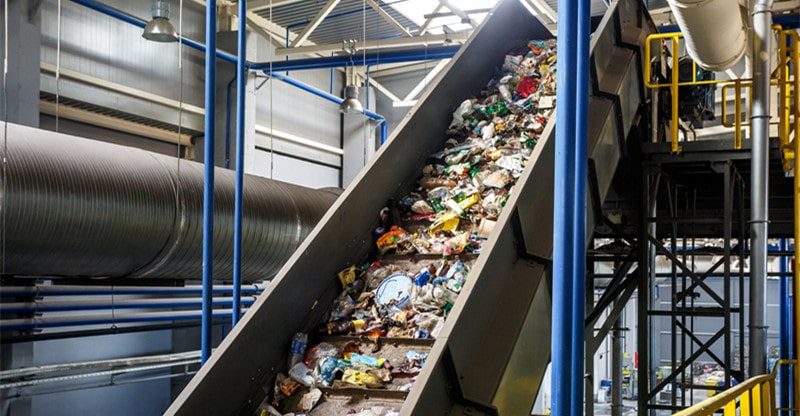Transforming Waste Into Resource: Innovative Solutions For Hazardous Waste Management
As we navigate the 21st century, the sheer volume of hazardous waste produced globally poses significant challenges. From industrial byproducts to consumer waste, society grapples with the growing problem of safely disposing of these dangerous substances.
However, envision a world where waste isn’t merely discarded but transformed into a resource. This concept is no longer a mere fantasy, as innovative solutions for hazardous waste management have emerged, transforming waste into a potential treasure trove of resources.
The Challenge Of Hazardous Waste Types
We generate a broad array of hazardous waste types. These include heavy metals from electronic devices, pesticides from agriculture, and chemical waste from industries, to name just a few.
Managing these materials isn’t just about dealing with their quantity. It’s also about understanding their potential to cause harm if not properly handled. For instance, the contamination of soil and water resources can occur, posing serious threats to both human and ecological health.
The Emergence Of Waste Transformation
Despite these challenges, many organizations have started viewing hazardous waste differently. Waste transformation, or turning waste into a resource, is not new. Yet, it has taken on new dimensions in the context of hazardous waste.
We are entering a period marked by resource scarcity and environmental degradation. This new age is compelling us to find innovative ways of dealing with waste, including converting it into something valuable. These new methods reduce waste and create valuable byproducts that can be reused or sold.
Case Studies In Waste Transformation
Let’s look at a few promising case studies in hazardous waste transformation. Companies worldwide are rising to the challenge, proving that hazardous waste can be a resource.
Some companies have developed a system for converting waste into energy. Using anaerobic digestion, they break down organic waste to produce biogas. This biogas can be used for heat, electricity, and vehicle fuel.
Another company, Mineral Carbonation International, has made strides in transforming CO2 emissions, a hazardous greenhouse gas, into building materials. The process involves reacting CO2 with minerals to produce carbonate rocks, the main component in bricks and concrete.
Regulations And Compliance
With new technologies emerging, regulatory bodies strive to establish guidelines to ensure the safe and effective conversion of hazardous waste into resources. For example, the Environmental Protection Agency (EPA) in the United States has been at the forefront of creating such regulations.
Implementing these technologies often requires navigating a maze of red tape. Compliance with these regulations is essential to ensure the waste-to-resource process does not cause further environmental harm. However, with the right strategies and adherence to regulatory guidelines, turning hazardous waste into resources can be an achievable goal.
Innovative Approaches In Waste Sorting
One of the initial steps in transforming waste into a resource involves sorting. Traditional methods often relied on manual labor, which was inefficient and exposed workers to health hazards. However, recent technological advancements have led to the emergence of intelligent waste-sorting systems.
Some companies have been developing AI-powered robots to identify and sort hazardous waste. These machines use advanced machine learning algorithms and sensor technology to categorize waste accurately, enhancing efficiency while reducing health risks to humans.
Localizing Waste Transformation
While large-scale industrial efforts are crucial, we can’t ignore the importance of localizing waste transformation. Community-based programs transforming waste into resources can profoundly impact local economies and environments.
For instance, composting programs can convert organic waste into rich, nutrient-filled soil for community gardens or local farms. Similarly, small-scale biogas plants can convert waste into energy, reducing fossil fuel dependency and reducing community energy costs.
Education And Awareness
Shifting societal perspectives on waste is paramount in transforming hazardous waste into resources. Education and awareness programs play a vital role in this shift.
Teaching people about the hazards of improper waste disposal and the benefits of waste transformation can encourage more responsible behavior. Additionally, informing citizens of local waste-to-resource programs can spur participation and support for these initiatives.
Investing In Research And Development
The future of hazardous waste management lies in the continued development and refinement of waste transformation technologies. Government bodies, academic institutions, and private enterprises must invest heavily in research and development to innovate and enhance these methods.
For instance, ongoing research into Pyrolysis — a process that can convert plastic waste into fuel — could lead to advancements that make this method more efficient and accessible.
Role Of Policy And Legislation
Policy and legislation have a pivotal role in driving the transformation of hazardous waste into resources. Governments can incentivize companies to adopt waste-to-resource methods by offering tax breaks or subsidies.
Additionally, they can enforce stringent penalties for improper waste disposal to deter traditional, harmful waste management practices. By implementing these measures, policymakers create a regulatory framework that promotes sustainable and innovative approaches, ultimately leading to a safer and more environmentally friendly waste management system.
Integration Of Different Waste Management Strategies
While transforming waste into resources is indeed promising, it’s also vital to consider it as part of an integrated waste management strategy. This means combining it with other methods like waste reduction, recycling, and traditional disposal methods.
For instance, companies can prioritize waste reduction by adopting more efficient production processes. At the same time, they can implement waste transformation strategies for the waste that is still produced. Combining different strategies ensures a more comprehensive approach to waste management.
Public-Private Partnerships
Public-private partnerships (PPPs) can play a significant role in managing hazardous waste. Governments and private businesses can join forces to fund and implement waste transformation projects, sharing both the costs and benefits.
Such partnerships can facilitate the adoption of innovative waste transformation technologies. They can also ensure that these initiatives have the necessary funding and regulatory support to be successful.
Importance Of Design For Environment (DFE)
Design for Environment (DFE) is a design approach aimed at reducing the environmental impact of a product throughout its lifecycle. By adopting DFE strategies, manufacturers can create products that are easier to recycle or transform into resources once they reach their end of life.
This strategy can significantly reduce the volume of hazardous waste that needs to be managed in the first place. It’s a crucial component in a holistic approach to waste management.
Influence Of Consumer Behavior
Consumer behavior influences the generation of waste significantly. Therefore, changing consumer habits is an essential part of the solution to the hazardous waste problem.
Encouraging consumers to choose products with less packaging, buy second-hand items, or opt for services instead of physical goods can reduce waste generation. At the same time, educating consumers about proper waste disposal can ensure that more waste gets transformed into resources instead of ending up in landfills.
Impact On Global Climate Change
Transforming waste into resources also has a significant impact on global climate change. Many waste transformation processes, such as waste-to-energy technologies, can reduce our dependence on fossil fuels. This can contribute to reducing greenhouse gas emissions and slowing the pace of climate change.
The Road Ahead
We’re beginning to see the enormous potential of turning hazardous waste into a resource. The case studies mentioned above are just a glimpse into what’s possible. As technology continues to advance, more opportunities will undoubtedly emerge.
Transitioning to a circular economy – where waste is viewed not as an endpoint but a starting point for something new – is key to sustainable development. The benefits of this approach extend beyond the obvious environmental advantages. It can also lead to job creation, economic growth, and a more sustainable future.
This transition won’t be easy. It will require changes in our mindset, the adoption of innovative technologies, and stringent adherence to regulations. Yet, the potential benefits are too significant to ignore.
Conclusion
Transforming hazardous waste into a resource is not just an innovative solution to a global problem; it’s a necessity. This path presents us with a remarkable opportunity – to repurpose what was once a liability into a solution for energy scarcity, economic development, and environmental sustainability. Focusing on these initiatives and supporting their growth can turn the tide on hazardous waste and shape a more sustainable future.




